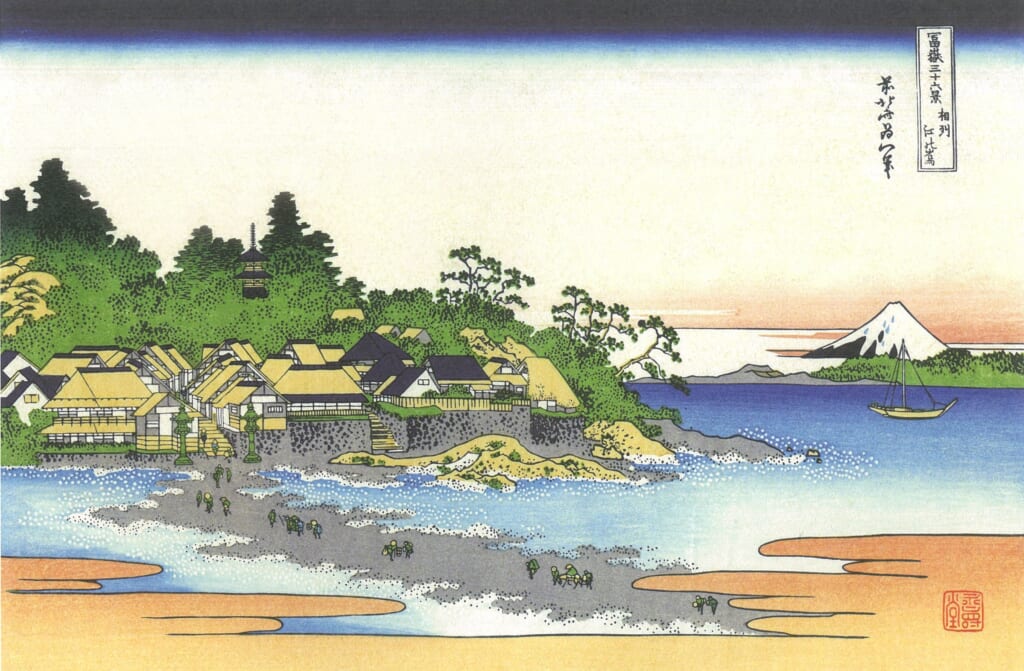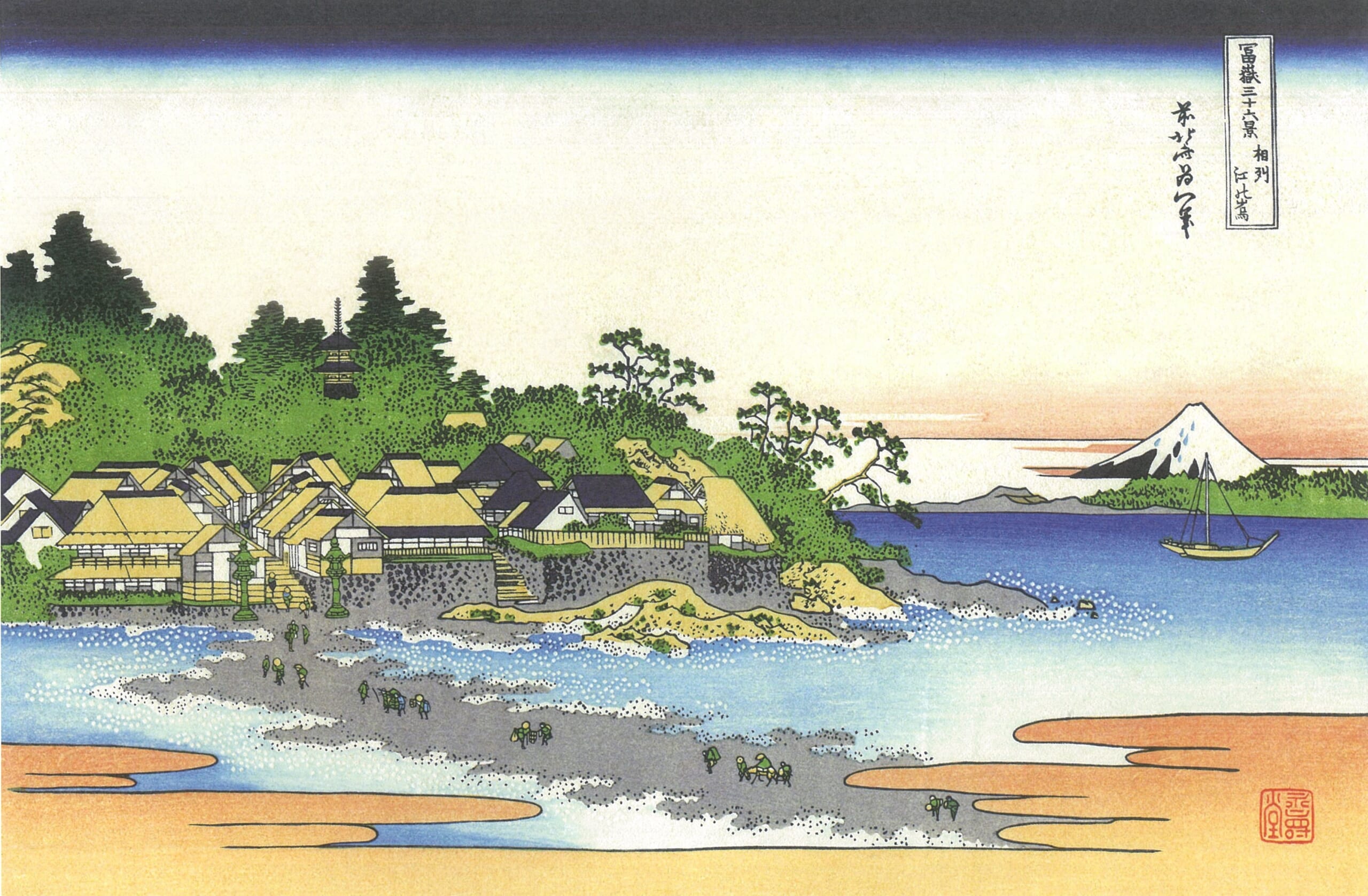Katsushika Hokusai’s Ukiyo-e I will explain Enoshima Island in Sagami Province in Thirty-six Views of Mount Fuji.
This ukiyo-e Enoshima is located in Fujisawa City, Kanagawa Prefecture.
It was also a popular tourist attraction during the Edo period.
Kanagawa Prefecture Designated Historic Site and Place of Scenic Beauty, One of Japan’s 100 Scenic Spots.
At that time, people crossed over to Enoshima by walking along the sandbar that appeared at low tide. There is now a bridge.
It conveys the movement of people rushing to visit Benzaiten in Enoshima during the limited time at low tide.
The tower of the Enoshima Shrine Kaminomiya of Enoshima Benten is visible. At the end of the crossing, you can see a large stone lantern, which is the entrance to the approach.
The teahouses and rows of houses on both sides of the river are drawn in detail. The sea surface around the island is calm without a single wave.
Enoshima is an effective ukiyo-e painting in which the stippled representation of the waves on both sides of the sandbar is symmetrical.
The roofs of buildings, sailing ships, the shape of Mt. Fuji and various triangles are overflowing.
In 1959, Fujisawa entered into a sister city relationship with Miami Beach in the United States, present-day Enoshima.
We will focus on tourism development in the Enoshima, Katase, and Kugenuma districts under the banner of “Miami Beach of the East.”
Enoshima Kamakura Kanko built Japan’s first outdoor escalator “Enoshima Escar” that year.
The number of tourists peaked at the 1964 Tokyo Olympics, and has since declined.
This ukiyo-e is from around 1830 to 1832. Hokusai is around 72 years old.



